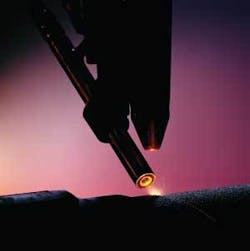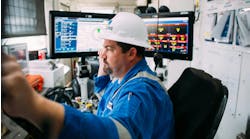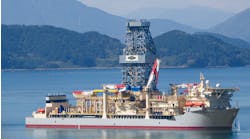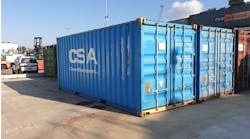OVERLAY WELDING: Transportable laser cladding system adapted for hazardous areas
The offshore sector should notice improvements in laser cladding technology, following Duroc’s launch of its first fiber laser system. The system’s main advantages are that it is portable and can be used in hazardous areas, according to managing director Johan Kinell.
Over the past decade, the company has been instrumental in developing laser cladding technology as a cost-effective method for repairing and upgrading industrial components such as valves, axles, and shafts in applications where performance and dependability are vital.
The total weight of the 4 kW fiber laser package, including robot, laser aggregate, and cooling aggregate, is only 600 kg, which means it is transportable by helicopter to an offshore installation. No electrical current passes into the welding object, which means that laser cladding can be employed in hazardous areas.
The fiber laser method offers the additional benefit that, as the beam is carried through an optic fiber, the heat source and welding head can be maintained remote from each other, with the heat source, for example, located outside the hazardous area.
Certificate
Duroc has developed fiber laser technology in a joint project with the Swedish nuclear industry, and the nuclear plant operator Ringhals will assist in qualifying and certifying the technology for use in various cladding processes, including pressure vessels. This exercise will qualify the technology to meet the most demanding requirements, says Kinell.
Overlay welding is an efficient method of ensuring that the cladding material achieves the desired metallurgical binding to the base metal. However, the high heat generated by conventional methods such as TIG and MIG welding can itself be a source of problems, as it affects the properties of the base material, possibly degrading them.
Laser welding avoids these issues as it involves much less heat, and also, the heat is concentrated precisely on the weld location. As the cladding material is formed of gas atomic powders, it is flexible in terms of the wide range of chemical compositions which can be made up.
Laser welding also is preferable to the alternative of thermal spraying, which avoids causing geometrical disturbance in the base material but achieves only mechanical bonding.
For more information contact Johan Kinell, Duroc Engineering i Göteborg. Tel +46 4224 0420, fax +46 4224 0820,[email protected], www.duroc.se




